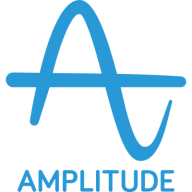


Find out what your peers are saying about Amplitude, Snowflake Computing, Google and others in Web Analytics.
| Product | Market Share (%) |
|---|---|
| Amplitude | 16.2% |
| Heap | 4.9% |
| Segment | 4.4% |
| Other | 74.5% |



Amplitude is a digital analytics platform that empowers businesses to understand and optimize customer experiences. It offers real-time insights into user behavior, helping companies identify patterns, measure engagement, and build data-driven strategies to improve their products and increase customer satisfaction.
This platform provides comprehensive analytics, combining data science and machine learning to help teams visualize trends and predict user needs. It integrates seamlessly with various data sources, making it easy to analyze customer journeys, track user interactions, and understand how features contribute to business goals. It also supports cohort analysis to group users based on behaviors, aiding personalized product improvements.
Key features include:
Benefits of using Amplitude include the ability to improve customer retention by understanding key engagement drivers, increase conversion rates through optimized funnels, and refine user experiences with more accurate segmentation. This leads to increased ROI as teams can focus on the most impactful improvements.
Amplitude is valuable across various sectors like e-commerce, fintech, and SaaS. It helps e-commerce teams refine product recommendations, fintech companies assess user acquisition strategies, and SaaS firms personalize onboarding experiences.
Pricing is tailored based on usage and features, offering free, growth, and enterprise plans. Customer support includes comprehensive documentation, a knowledge base, and expert guidance for setup, data management, and strategic analysis.
In summary, Amplitude helps businesses analyze and optimize digital user experiences to enhance engagement, conversion, and retention through a robust suite of analytical tools.
Segment is a customer data platform that helps organizations collect, unify, and analyze customer data from various sources. Its primary use case is to provide a single view of the customer across different touchpoints, enabling businesses to deliver personalized experiences.
The most valuable functionality of Segment is its ability to integrate with numerous data sources, such as websites, mobile apps, and third-party tools. It simplifies the process of data collection and unification, allowing organizations to easily access and analyze customer data in real time.
Segment helps organizations by providing a comprehensive understanding of their customer's behavior, preferences, and interactions. This valuable insight enables businesses to make data-driven decisions, optimize marketing campaigns, and improve customer engagement. By leveraging Segment's capabilities, organizations can enhance customer experiences, increase customer satisfaction, and drive business growth.